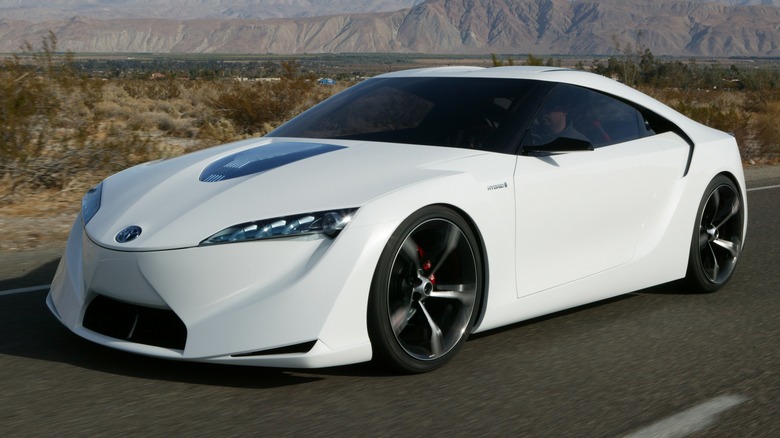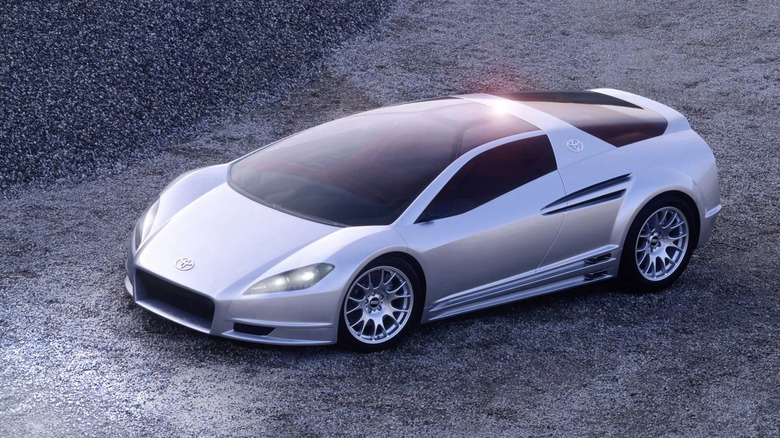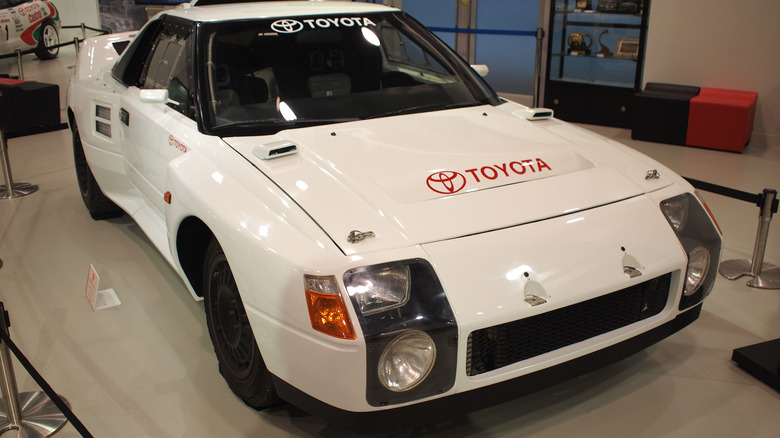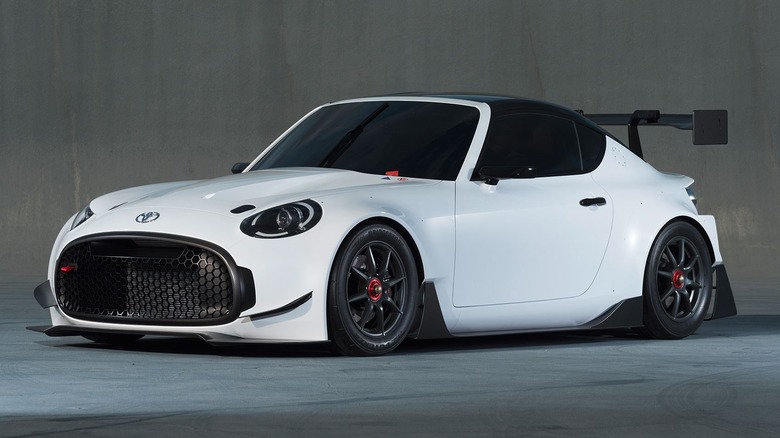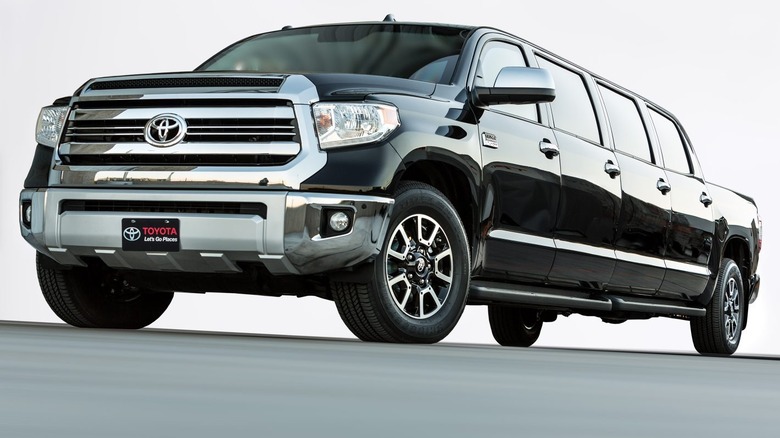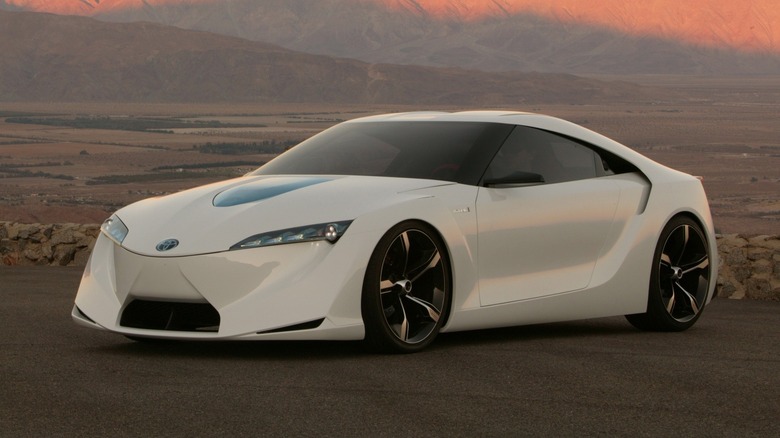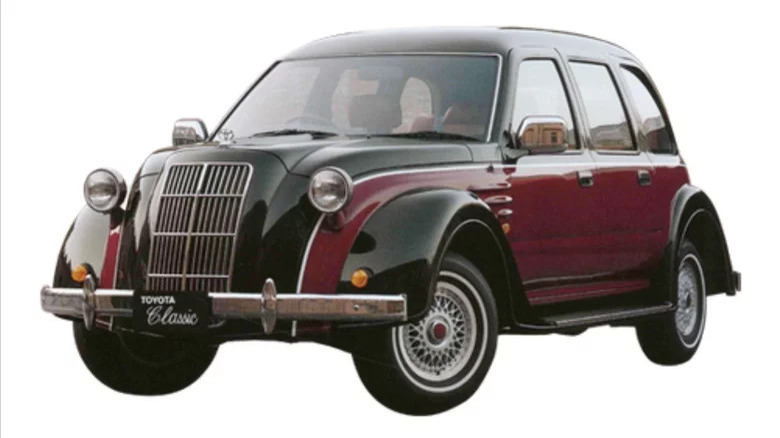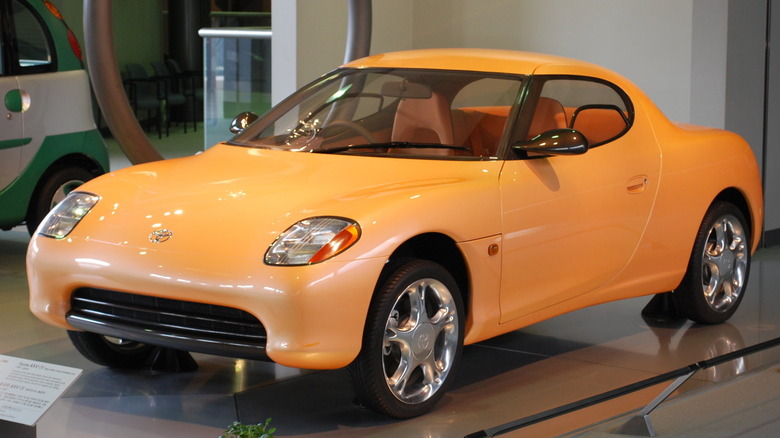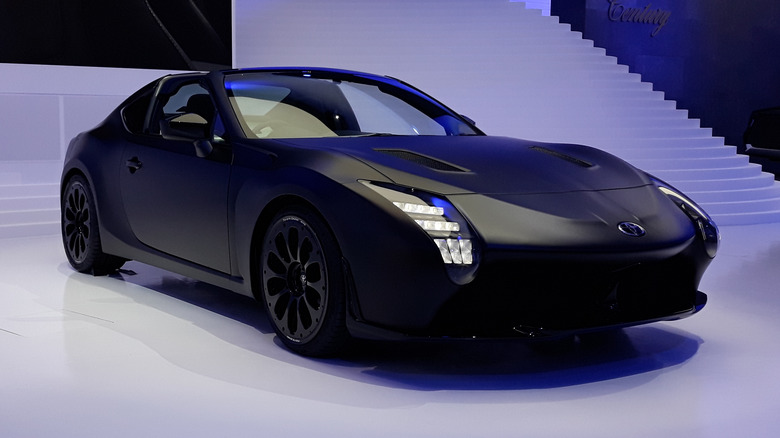9 Awesome Toyotas Everyone Forgets About
As the world's largest carmaker, Toyota is responsible for many of today's most recognizable nameplates. SUVs like the RAV4 and Land Cruiser have proven themselves as bestsellers in their respective segments for decades, and the Camry, Corolla, and Prius are among the most common cars on the road — not just in America, but all over the globe. However, like any manufacturer, Toyota has had its fair share of forgotten concepts, one-offs, and low-volume specials, with some of its most innovative and unique cars remaining off the radar of most enthusiasts today.
We've trawled through the archives to dig up some of Toyota's coolest forgotten cars from years past, including everything from a lost hybrid supercar to a 26-foot-long pickup truck. Not every car here made it to production, but a few of them did, and those that did are extremely rare to find for sale — not to mention very expensive on the occasion that they do crop up.
Toyota Mega Cruiser
One of the strangest yet coolest forgotten Toyotas is the Mega Cruiser, which was essentially the Japanese equivalent of the Hummer. Like its American counterpart, the Mega Cruiser was originally designed for military use, but almost as soon as Japan's Ground Self-Defence Force took delivery of the first few units, buyers began to demand a civilian version. The truck was over 16 feet long and 7 feet wide, with room for six people and up to 1,650 pounds of cargo. That made it ideal as a remote rescue vehicle, and several examples were indeed developed for emergency services. But, it was most popular with buyers who simply wanted the biggest, most capable off-road truck that a Japanese manufacturer had ever offered.
Although the truck was only ever officially sold in Japan, today they can be found in a number of international markets where all-terrain trucks are highly prized — Russia, Australia, and the U.S. are reportedly three of the most common export locations. Buying one is not cheap: Adjusted for inflation, the Mega Cruiser originally cost the equivalent of $233,000 when it launched in 1995, and on the rare occasion they're listed for sale today, they can still fetch around the same price. Production of the SUV continued until 2001, with just over 100 civilian Mega Cruisers rolling off the line in that time.
Toyota Alessandro Volta
The idea of a hybrid supercar is nothing new today, but when the Toyota Alessandro Volta was unveiled back in 2004, it was groundbreaking. The sleek, mid-engined supercar featured a 3.3-liter V6 engine paired with two electric motors, one on each axle. Total combined output was reportedly more than 400 horsepower, which is even more impressive when you consider that the hybrid powertrain was adapted from the Highlander Hybrid SUV. The unique layout meant it had all-wheel drive, which was also highly unusual for a supercar at the time.
Its styling was handled by Italdesign, with inspiration taken from the Italian studio's earlier supercar projects, including the BMW Nazca and Volkswagen W12. A carbon fiber chassis was used to save weight and increase rigidity, and a sliding steering column and pedals meant that the car could instantly switch from being left-hand to right-hand drive. Looking back, the car was very much ahead of its time — it effectively predicted the blueprint for many modern supercars a good 15 years before they entered production, sliding pedals aside — but since it was only ever intended to be a design showcase, just one example was made.
Toyota 222D
The Toyota 222D might have been one of the brand's greatest rally cars had it ever gotten the chance to race, but unfortunate circumstances saw it canceled before it ever reached the start line. The World Rally Championship's Group B had become the ultimate proving ground in the early '80s, with manufacturers battling to assert their dominance, creating some of the greatest rally cars ever made in the process. However, in their quest for speed, the cars had become more dangerous, and a string of deadly accidents claimed the lives of both competitors and spectators during the 1985 season. Faced with such tragic events, rally organizers chose to ax Group B altogether, and cancel the upcoming Group S regulations that were due to launch for the 1987 season.
The 222D was designed specifically to meet these Group S regulations, and its development was almost complete by the time the regulations were changed. The car was based on the recently-launched MR2, but featured a specially adapted 2.0-liter engine and all-wheel drive. Group S was replaced by Group A regulations, which were much stricter and required competition cars to be much closer to their roadgoing counterparts. Toyota could do little else but shelve the project and begin work on a new Group A car, leaving the 222D as a nearly complete but now unusable rally car. Only two prototypes still survive today, one of which resides at Toyota Motorsport's facility in Germany, while the other remains in Japan.
Toyota S-FR
First unveiled at the 2015 Tokyo Motor Show, the Toyota S-FR didn't look like a show car. It had a complete, fully functional interior, production lights and wheels — in fact, it looked very much like a pre-production car, and one that was almost ready for the road. It was reported that the car would enter production by 2016, as the smallest and cheapest of Toyota's sports car trio, alongside the GR86 and the Supra. Adding to the hype was the emergence of a racing variant the following year (pictured), complete with a carbon fiber aero kit and flared fenders.
Then, after more than a year of building expectations, Toyota suddenly went quiet. Fast forward seven years, and there's been no news since, although Japanese Nostalgic Car put forward a theory about why the project might have suddenly stalled. The outlet claims that an insider revealed the Toyota is actually built on the platform of the Mazda Miata, although strangely enough, it appears to be using the NC platform rather than the more recent ND. The powertrain also appears to match up – Car and Driver reported the S-FR had a 1.5-liter engine, the same displacement as the JDM Miata. If that's the case, it's possible that the S-FR was set to be built in partnership with Mazda, and there was some issue with that partnership that prevented the car from reaching production. Whatever happened, it's a huge shame that it never made it into the hands of customers.
Toyota Tundrasine
The annual SEMA show is a great place to see all kinds of weird and wonderful creations from manufacturers, and in 2015, Toyota joined in the fun and unveiled its Tundrasine concept at the show. As its name suggests, the Tundrasine is a Toyota Tundra pickup that's been stretched into a limousine, and refitted with a luxurious interior befitting of VIP transport. It started off as a regular Tundra 1794 Edition 4×4 CrewMax 5.7-liter V8 and was then stretched to over 26 feet long, with eight doors for easy access to the customized cabin.
The interior was inspired by the passenger compartments of private jets, according to Toyota, and is decked out accordingly in fine leather. Its engine, however, is not quite as exotic — the Tundra's standard, trusty V8 remains under the hood. The extra length and decadent upholstery added a significant amount of weight to what was already a heavy truck, with the Tundrasine weighing in at 7,978 pounds. Since it was designed as a one-off for the SEMA show, only one example was built, and it's unclear what happened to it after the show was over.
Toyota FT-HS
Despite Toyota's lineup of production cars being generally pretty dull throughout the mid-'00s, its concepts were nothing of the sort. The FT-HS was a futuristic concept in the same vein as the Alessandro Volta, with a 3.5-liter V6 hybrid powertrain making around 400 horsepower. However, this time around, Toyota explicitly positioned the FT-HS as a mid-market sports car rather than a supercar, calling it "a true 'attainable exotic' with 21st Century performance." It was also rear-wheel drive rather than all-wheel drive like the Alessandro Volta, and featured a unique seating setup, where it was a four-seater with the roof up, but became a two-seater when the roof was down.
The FT-HS was, in some ways, the predecessor of the modern GR Supra, although there was never any indication that the FT-HS itself was considered for production. Perhaps, like the Alessandro Volta, we can simply chalk that up to the car being ahead of its time -– after all, a hybrid sports car might still have been a tough sell back then, especially since it came from the company best-known for the much-maligned Prius.
Toyota Classic
One of Toyota's oddest production vehicles is the 1996 Classic, which was built in limited numbers to celebrate the 60th anniversary of the company's first car, the Model AA. It was based on the chassis of the Hilux pickup and borrowed the Hilux's 2.0-liter four-cylinder engine. Performance was modest, with the engine making a fraction over 95 horsepower, which was sent to the wheels via a four-speed automatic transmission.
All 100 examples of the car were built by Toyota's in-house coachbuilding division, with the same two-tone black and red color scheme adorning every car. Inside, the Classic featured a number of retro touches to pay homage to the Model AA, including a wood-rimmed steering wheel, woodgrain dashboard, and red leather seats. The car proved to be popular with buyers, but its low initial production numbers mean that it's very rare to find one for sale today. Its retro looks might leave some people scratching their heads, but it's still a cool piece of the brand's history that doesn't deserve to be forgotten.
Toyota AXV-IV
"Simplify, then add lightness." Colin Chapman's famous mantra is most associated with his highly successful Lotus race cars, but Toyota applied its own version of that philosophy to the 1991 AXV-IV concept. Its smooth, flowing lines were built to be as slippery as possible, and its ultra-light curb weight of 992 lb made it lighter than almost anything else on the road at the time.
Toyota focused primarily on efficiency when designing the car, both in terms of aerodynamics and fuel consumption. As a result, the AXV-IV's powertrain was a small 804cc two-stroke engine making 63 horsepower, which might not sound like much, but would have been surprisingly zippy given the car's diminutive mass. Like many of Toyota's sports car concepts, the AXV-IV never made it to production, and it's not known what happened to the original concept after it finished touring the auto show circuit. However, its influence can be seen in the designs of several later Toyota production cars, including the third-generation MR2.
[Featured image by Mytho88 via Wikimedia Commons | Cropped and scaled | CC BY-SA 3.0]
Toyota GR HV Sports
It might have only been unveiled in 2017, but the GR HV Sports concept has already been long forgotten by most enthusiasts. It took design inspiration from Toyota's TS050 Hybrid endurance racing car, and featured a powertrain with race-derived hybrid technology, although exact power figures were not disclosed. Reports at the time noted that the concept looked close to production-ready, with plenty of its interior parts seemingly shared with the production Toyota 86. That should be no surprise given that the car was based on the 86's chassis.
After the car's unveiling, some enthusiasts held out hope for a customer version, but sadly, like so many of Toyota's other excellent one-offs, it never progressed past the concept stage. With hybridization becoming more common across all aspects of the auto industry, however, it's likely that we'll see a small hybrid sports car from Toyota in the future. Here's hoping it looks as cool as this one.
